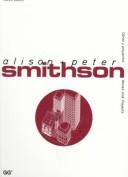| Listing 1 - 10 of 51 | << page >> |
Sort by
|
Article
Abstract | Keywords | Export | Availability | Bookmark
 Loading...
Loading...Choose an application
- Reference Manager
- EndNote
- RefWorks (Direct export to RefWorks)
Book
Year: 1982 Publisher: London: Academy editions,
Abstract | Keywords | Export | Availability | Bookmark
 Loading...
Loading...Choose an application
- Reference Manager
- EndNote
- RefWorks (Direct export to RefWorks)
Book
Abstract | Keywords | Export | Availability | Bookmark
 Loading...
Loading...Choose an application
- Reference Manager
- EndNote
- RefWorks (Direct export to RefWorks)
Book
Abstract | Keywords | Export | Availability | Bookmark
 Loading...
Loading...Choose an application
- Reference Manager
- EndNote
- RefWorks (Direct export to RefWorks)
Smithson, Alison --- Smithson, Peter --- Verenigd Koninkrijk, Engeland
Article
Abstract | Keywords | Export | Availability | Bookmark
 Loading...
Loading...Choose an application
- Reference Manager
- EndNote
- RefWorks (Direct export to RefWorks)
Smithson, Alison --- Smithson, Peter --- Verenigd Koninkrijk , Engeland
Book
Year: 1982 Publisher: London Academy Editions
Abstract | Keywords | Export | Availability | Bookmark
 Loading...
Loading...Choose an application
- Reference Manager
- EndNote
- RefWorks (Direct export to RefWorks)
Architecture --- Smithson, Peter --- Smithson, Alison --- Great Britain
Book
Year: 1982 Publisher: London: Academy editions,
Abstract | Keywords | Export | Availability | Bookmark
 Loading...
Loading...Choose an application
- Reference Manager
- EndNote
- RefWorks (Direct export to RefWorks)
Architecte --- Dessin d'architecture --- Smithson, Alison --- Smithson, Peter

ISBN: 9788425216848 8425216842 Year: 1997 Publisher: Barcelona : Gustavo Gili,
Abstract | Keywords | Export | Availability | Bookmark
 Loading...
Loading...Choose an application
- Reference Manager
- EndNote
- RefWorks (Direct export to RefWorks)
Architecture --- Architecture --- History --- Histoire --- Smithson, Alison, --- Smithson, Peter,
Book
ISBN: 9788434312548 8434312549 Year: 2011 Publisher: Barcelona Ediciones Poligrafa
Abstract | Keywords | Export | Availability | Bookmark
 Loading...
Loading...Choose an application
- Reference Manager
- EndNote
- RefWorks (Direct export to RefWorks)
Adapting the modernist ideals of prewar architecture to the needs of postwar reconstruction in Britain, Alison and Peter Smithson were among the most influential and controversial architects of the latter half of the twentieth century. As younger members of CIAM (Congrès Internationaux d'Architecture Moderne) and as founding members of Team 10, they were at the heart of the debate on the future course of modern architecture; the uncompromising clarity of their Hunstanton Secondary Modern School (1949-1954), which stripped down the language of Mies van der Rohe to a rough simplicity, heralded the Smithsons' role as the leading exponents of the New Brutalism (a term they coined). As members of the Independent Group alongside Richard Hamilton, Eduardo Paolozzi, Reyner Banham and others, they participated in the 1956 landmark show This Is Tomorrow, affiliating themselves with the burgeoning Pop art movement in Britain. This beautifully produced and fully illustrated volume collects the most important essays published on the couple's work, from older texts by Reyner Banham, Peter Cook, Kenneth Frampton and Philip Johnson to the most recent texts by Peter Eisenmann, Christine Boyer, Beatriz Colomina and Louisa Hutton. The first publication in Poligrafa's new Critical Anthology series, it provides an essential critical context for the reception of New Brutalism in England. Alison (1928-1993) and Peter (1923-2003) Smithson met at Durham University in England and were married in 1949. Their Hunstanton School, now a Grade II listed building, announced a new style of construction that foregrounded concrete and repetitive, angular geometries; later works declared a socialist dimension to their philosophy, particularly in the exposure of interior functions.
Architecture --- History --- Histoire --- Smithson, Alison, --- Smithson, Peter, --- Criticism and interpretation. --- Critique et interprétation --- Smithson, Alison --- Smithson, Peter --- Critique et interprétation. --- Critique et interprétation.
Book
ISBN: 9782956704805 295670480X Year: 2019 Publisher: Oudon As found Press
Abstract | Keywords | Export | Availability | Bookmark
 Loading...
Loading...Choose an application
- Reference Manager
- EndNote
- RefWorks (Direct export to RefWorks)
Publiés initialement dans Architectural Design entre 1973 et 1975, la série des sept articles intitulée Collective Design rappelle l’essence collective de l’architecture. Au constat d’une fragmentation culturelle de la société jugée inéluctable, les Smithson interrogent la dimension politique de leur travail à un moment charnière de leur carrière. | Between 1973 and 1975, Alison and Peter Smithson, published a series of seven articles in Architectural Design questioning the unity of the architectural form, as well as their commitment as architects. In recognition of the inevitable cultural fragmentation of society, they question the collective dimension of their work and their relationship with the community.
Architecture --- History --- Histoire --- Smithson, Alison, --- Smithson, Peter, --- Écrits d'architectes --- Smithson, Alison --- Smithson, Peter --- Critique et interprétation. --- Grande-Bretagne --- Écrits d'architectes --- Critique et interprétation.
| Listing 1 - 10 of 51 | << page >> |
Sort by
|

 Search
Search Feedback
Feedback About
About Help
Help News
News